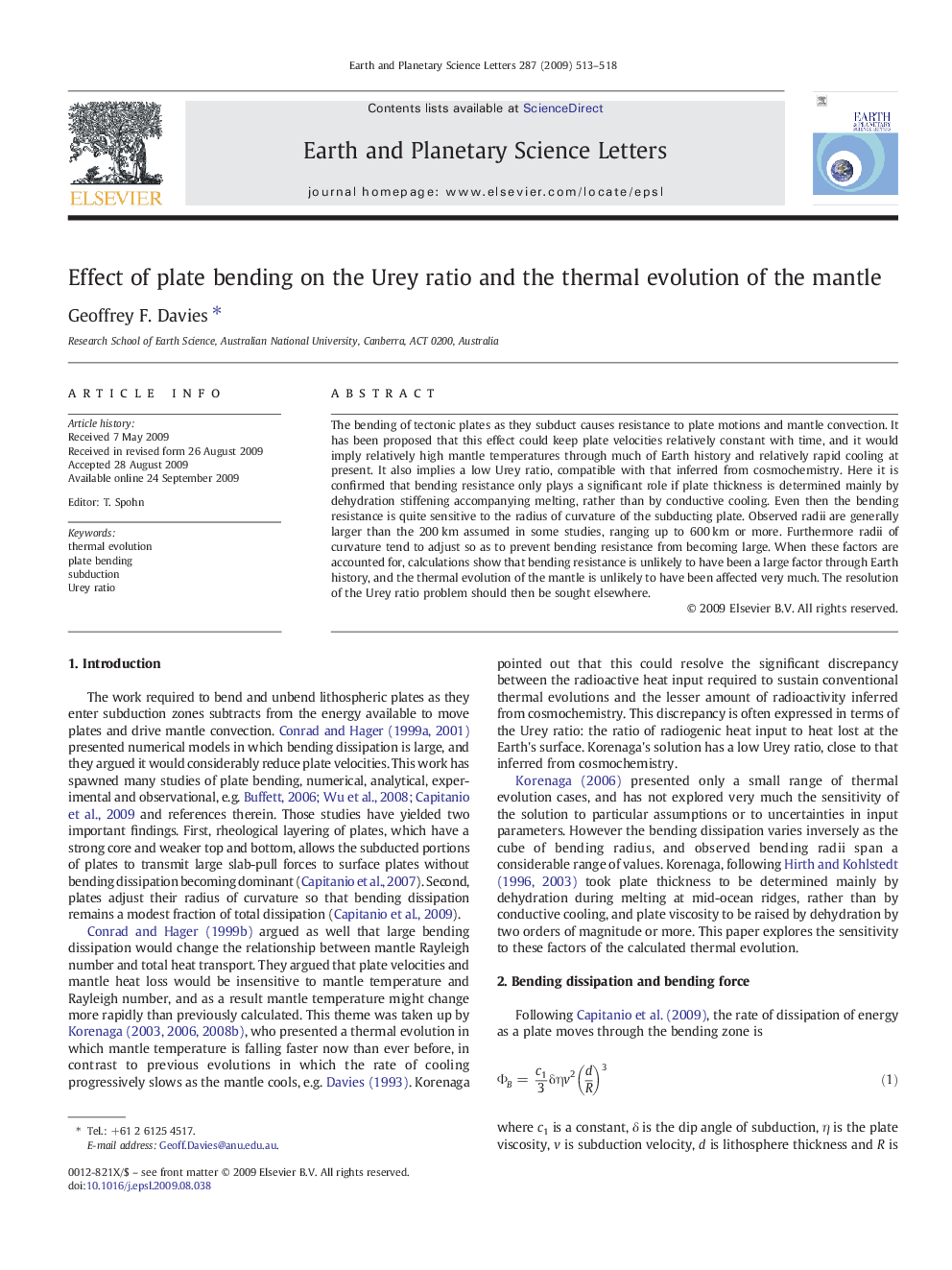| Article ID | Journal | Published Year | Pages | File Type |
|---|---|---|---|---|
| 4679066 | Earth and Planetary Science Letters | 2009 | 6 Pages |
The bending of tectonic plates as they subduct causes resistance to plate motions and mantle convection. It has been proposed that this effect could keep plate velocities relatively constant with time, and it would imply relatively high mantle temperatures through much of Earth history and relatively rapid cooling at present. It also implies a low Urey ratio, compatible with that inferred from cosmochemistry. Here it is confirmed that bending resistance only plays a significant role if plate thickness is determined mainly by dehydration stiffening accompanying melting, rather than by conductive cooling. Even then the bending resistance is quite sensitive to the radius of curvature of the subducting plate. Observed radii are generally larger than the 200 km assumed in some studies, ranging up to 600 km or more. Furthermore radii of curvature tend to adjust so as to prevent bending resistance from becoming large. When these factors are accounted for, calculations show that bending resistance is unlikely to have been a large factor through Earth history, and the thermal evolution of the mantle is unlikely to have been affected very much. The resolution of the Urey ratio problem should then be sought elsewhere.
